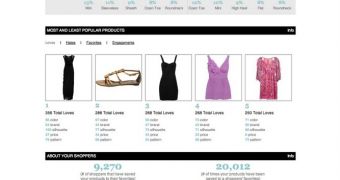The name Google doesn't exactly scream high fashion, but there's nothing the company wouldn't get into as the launch of Boutiques.com last year proves.
The site offers an unique shopping experience, catered to individual tastes, powered by powerful visual search and image recognition technologies, which is why Google is got into it in the first place.
Now the site is getting a few updates and a couple of new feature, making use of all the data amassed so far.
"Since we introduced Boutiques.com last November, we’ve been busy developing new features that we’re proud to unveil as New York Fashion Week hits the runways," Abigail Holtz, Product Manager at Google, wrote.
There are now a lot more 'boutiques,' of course, mostly created by users but also some from designers, fashion bloggers and so on.
Google is not saying much about how many people are using the site, but is claiming that hundreds of thousands of boutiques have been created.
"We’re welcoming hundreds of thousands of stunning new boutiques, including those from designers Helmut Lang, Michael Kors, Billy Reid and Thakoon," Google said.
The big new feature introduced is Designer Analytics, which enables those running boutiques to see which products, designs, colors and so on are the most popular.
"With easy-to-understand data visualizations, Designer Analytics shows what colors, shapes and patterns are most loved and hated broadly (in categories such as shoes, dresses and handbags) and even down to how specific items are performing. Designers can also see how their stats compare to brands like them," Google also said.
The tool could prove very useful in spotting trends and seeing which of your products aren't very appreciated by the public. If Boutiques.com has a large enough user base, it should provide very relevant data to designers which would otherwise be hard to come by.
There is also a public version of this, based on aggregate data across the site. Again, this should prove useful, or at least interesting for anyone interested in trends. Raw data is not going to supplant events like the major Fashion Weeks any time soon, but it can be an interesting alternative.

 14 DAY TRIAL //
14 DAY TRIAL //